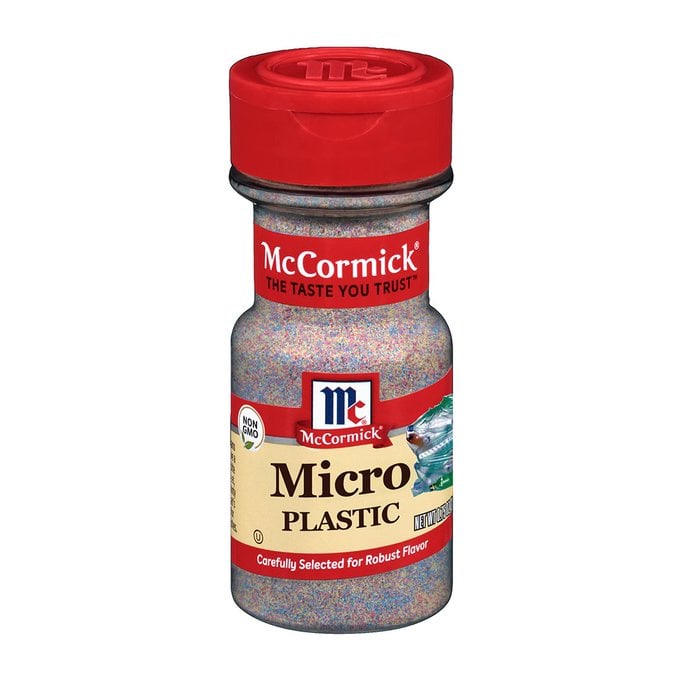Recently I’ve been buying a few cookbooks from the thrift shop. Saves money over getting the new ones, saves second-hand goods from being tossed, and does the job I need in finding recipe ideas.
One of the cookbooks I got is a cookbook on pasta sauces. I’ve been holding off on making pasta until I could portion the servings properly, and I recently just got a portioning tool to help me with that. However, when I wanted to try a recipe from the book, I found surprisingly that the recipes called for fresh tomatoes.
Now, the cookbook is by no means new, seeing how the publication date is 1987. From what I’ve heard, canned tomatoes are actually preferred over fresh, though I can’t recall the reasoning as to why. I was curious about whether culinary knowledge has evolved since the publication of this book where common practice has changed to prefer canned tomatoes over fresh, or if the differences I’ve heard about are unfounded or incorrect.
On top of that, I was curious about other aspects. Would making pasta sauce with fresh tomatoes (namely Roma tomatoes) be cheaper than using canned? Also, since I’m trying to be more environmentally conscious, would canned tomatoes have a higher carbon footprint than fresh, or would the differences be negligible?
Thanks in advance! I likely won’t be able to respond to comments right away, but I do appreciate any and all help.
Good quality canned is generally preferred.
You can make tomato sauce from fresh tomatoes, but it is a serious time investment, and you will, at best, end up with the same product quality as canned.
Here’s Alton Brown’s recipe for tomato sauce from fresh tomatoes:
https://www.foodnetwork.com/recipes/alton-brown/tomato-sauce-recipe-1912571
It’s difficult to find quality, properly vine-ripened tomatoes. They have such a short shelf life and ship poorly when ripe, so almost everywhere that produces them picks them green and ships them to markets. They hit them with a little ethylene and bam, bright-red, blemish-free, bland, semi-unripe tomatoes. But places that produce canned tomatoes can pull them right when they’re perfect, skin them, seed them, cook and mill them and store them away.
If you can find a local farm with quality vine-ripened tomatoes, you still need to seed them, roast them, skin them, and mill them. You just want the flesh, and you want it to be cooked and smashed to death.
And for consistency, a good can of San Marzano will be the same every time.
Price Comparison depends on what you have access to and what season it is. If you buy local farm-grown tomatoes in bulk, you can probably make it somewhat cheaper. If you’re just buying them from the grocer and they’re out of season, you won’t be able to touch the quality for the price.
Carbon FP is an interesting take. They’ll spend less energy per tomato doing them in huge batches. But you’re not going to can them, But the cans are recyclable, but recycling uses electricity. Presumably, you’re going to get them hyper-locally, but the added shipping cost to send the few you’re using to market is marginal. I’d say it’s almost, but not quite a wash with it being a little better locally. You’d also be supporting local farms which is good for everyone. Of course, this also means you need to be getting them in growing season so they aren’t getting shipped up from equatorial countries.
TL;DR
It’s probably not noticeably cheaper, or higher quality than good quality canned, but that’s no reason not to do it.
Energy wise your stove is probably not as energy efficient either - the stove itself might be, but large batches mean a better volume to surface area ratio and they have some incentive to look at the energy usage as it is a large cost so they may be finding other ways to control energy.
IMO doing a correct tomato sauce (yes it’s quite time consuming and you should take extra care of how you do the onions, again IMO) it’s wildly better.
Fun tip, undercook your pasta and finish cooking them in the tomato sauce!
I’m wondering how people do their sauce if canned is even equal in taste but well 🤷🏼♀️
For quality? Tomato paste and sauce- the canned stuff, not the jars (prego, or whatever their other brand is.)
There’s a few reasons for it.
Also, generally speaking, canned tomatoes are going to have better flavor than store-bought-fresh.
The reason for this is because the canners are next door to the farms, so they let the tomatoes ripen on the vine and pick them when they’re supposed to, where as fresh tomatoes, they harvest them when they’re still horribly green so they don’t go bad while they ship them from Mexico. (Yes, this includes the “on the vine” things where they leave some vine. That does absolutely nothing once it’s cut.)
As for carbon footprint, it depends where you get your tomatoes from, more than how you get them- if they’re a local farmer, they’ll have a much lower impact than where your supermarket typically gets them (Mexico,)
If you’re growing your own…. That’s best in all cases (but making a sauce out of tomatoes takes a lot of time.)
Local farmers often have a larger energy footprint. If they have to grow in a greenhouse with heat and artificial light as many northern climate must do you are lost. A semi-truck full of tomatoes is per tomato not using much energy despite long distances, while a farm truck with a few tomatoes in it from farm to market uses a lot more energy per tomato.
I don’t know how to do a full life cycle analysis on this, but it is sorely needed.
There’s is a LOT of “it depends” here. on both sides of the equation.
For shipping up from mexico (or wherever. California can be just as far,) isn’t just a matter of a semi truck hauling it up. If the produce comes by rail (which it might,) that’s pretty efficient. But, the caveat here is when you’re shipping produce, you’re also storing it.
It’s usually refrigerated to reduce spoilage and other things. Then there’s the packaging (all of which needs to be shipped, too. To the farm and the processing plants.) There’s the question of how quickly it’s brought to market, and how much time it spends bouncing around the country through distribution centers.
For greenhouses it depends on the technologies being used in the greenhouse. On one hand, greenhouses using natural gas to heat, using horribly inefficient incandescent or whatever lights… yeah. That’s going to be awful.
but you can also have carbon neutral (or indeed, negative,) Greenhouses. (forexample). LED lighting at the optimal frequency, geothermal heat pumps… and then for comparison, my back-yard greenhouse has about three times the crop-size that a similar traditionally-planted plot would have- and I can easily take that up to five or six times, but it gets cramped to work in, which means you also need consider how productive that greenhouse is compared to how productive the open-field farm is.
The best you can do is look at individual farms and what their carbon footprint is, and then the footprint of their shipping infrastructure as well. But generally speaking, local growers are going to be lower carbon than international growers. even just storing those apples year-round (in a degree-above-freezing cooling houses) is ridiculously carbon-expensive
I would suggest, for anyone that wants “the best” and environmentally friendly, look for local crop sharing programs. Most of those farmers are environmentally conscious. (and community conscious,). and don’t be shy asking for a tour or something. they can be a bit of a mystery-box experience, but usually they have their staple crops (right now it’s apples and pumpkins/squashes).
I had made pasta with fresh tomatoes exactly once.
Yeah it was tastier than canned tomatoes. And it also took me half a day to make. In the end I just dumped the pasta into the pan with tomatoes. Canned tomatoes are like 3x faster, because they take no preparation time beyond opening the can.
The variety of tomatoes matters little, the heat treatment will average the taste, so it’s okay to use the cheapest tomatoes for this, as long as they didn’t start to rot.
Edit after reading others’ replies: maybe the tomatoes in my country are just better, even the cheapest variety is tasty enough eaten raw, and the only time I could find tomatoes that are picked green and are ripening on the shelf is during winter, when all fresh vegetables are hydroponics, and even then you have some choice.
The recipe:
-
Get fresh tomatoes. Wash tomatoes. Cut tomatoes in 2 or 4 pieces each, you’ll mash them anyway so thin slices do not matter. Fill the biggest bowl in your kitchen with sliced tomatoes. I was using like 2 kg of tomatoes, they wouldn’t fit into the pan until simmering down.
-
Fry diced onions and carrots in a pan, using a generous finger-thick layer of olive oil, until the onions are golden and carrots are sweet.
-
Dump tomatoes into the pan. Cover with a lid, cook on a slow fire for about 15-20 minutes. Mash and stir each 3 minutes so they won’t burn. Cooking less will preserve taste of fresh tomatoes, cookig longer will make it taste closer to canned pasta sauce. But cooking for less than 5 minutes will keep tomatoes stay in big chunks, so you won’t be able to make your sauce stick to the pasta.
-
Boil pasta while tomatoes are cooking.
-
Dump Italian spice mix onto the pan. Turn off the heat, let it simmer for 1 minute.
-
Dump pasta into the pan, stir, slurp your tomato-pasta soup from the pan like an animal, contemplate your life choices when you have trouble standing after eating 3 kg of food.
-
Canned San Marzano over fresh tomato, except when the tomato is in season, perfectly ripe and full of glutamate. The MSG stuff.
I make friends a honey and garlic tomato sauce at my place, perfect served cold with bread or warm on pasta.
300 ml olive oil At least 6 cloves of garlic 1 medium onion cut into 8 pieces Optional a red bell pepper or lombok if you like spice.
Fry the garlic, onion and such till the garlic is at least medium brown.
Add 2 x canned San Marzano tomato and be careful, oil and water is not a great combo so lower the heat. Poor it in on one side of the pan then stir.
Stick blender, the oil and tomato will emulsify and change color to a bright red sauce.
Add honey, salt and pepper and any finely chopped herbs, like basil, sage, tarragon, oregano, majoran and such and stick blender a few pulses. I always add fresh thyme and rosemary later because stick blendering them makes the sauce bitter.
Bon appetite.
Unless you are growing the tomatoes yourself, you’re better off using canned. Store bought are picked green and are watery and flavorless. They’re only good for salads and sandwiches.
Store bought tomatoes are only good for compost.
Thumbing through my copy of “On Food and Cooking” by Harold McGee, I didn’t find anything specifically comparing fresh vs canned tomatoes for pasta sauces, but it does mention:
Fresh tomatoes readily cook down to a smooth puree, but many canned tomatoes don’t. Canners frequently add calcium salts to firm the cell walls and keep the pieces intact, and this can interfere with their disintegration during cooking. If you want to make a fine-textured dish from canned tomatoes, check the labels and buy a brand that doesn’t list calcium among its ingredients.
during cooking. If you want to make a fine-textured dish from canned tomatoes, check the labels and buy a brand that doesn’t list calcium among its ingredients
You can also buy canned “seeded, skinned, crushed” tomatoes which are already 90% of the way there. I generally don’t buy anything more processed than it needs to be, but in canned tomatoes, it doesn’t seem to matter.
Excellent questions. I’m eagerly awaiting the engagement of someone with this knowledge as I’ve wondered the same. Flavour, environmental, cost.
Fresh tomatoes are so much better, it’s like a different food entity but it’s a pain to process them. A tomato mill helps a lot with that but it crushes the tomatoes so if you want chunky sauce it’s not ideal. What I often do is mill 3/4 of the tomatoes and then hand seed the rest and that seems to work pretty well.
Fresh tomatoes from a garden, or if you have a good local farmer slinging heirloom tomatoes are the best.
Canned tomatoes are really close to this, and being shelf stable are pretty incredible because you can make delicious sauces any time.
The “fresh” tomatoes that look like what you get on a burger at a fast food joint, or the Roma tomatoes that come sliced into wedges on that side salad at the diner you have literally never seen anyone eat are infinitely worse than canned tomatoes and honestly should be banned from using the word “tomatoes”
Feels like those ones should be forced to market themselves as “tumatos” or “tomato-like fruit”
What is best?
For best flavor I’ll use fresh tomatoes right out of the garden (or fresh from the farm, del monte is twenty minutes down the road). For best speed I use canned tomato sauce. For a happy medium, San marzano whole peeled tomatoes tend to be my favorite, crushed by hand. Different recipes for each.
If you can get local tomatoes that were harvested when actually ripe, go for fresh. If all you can get your hands on are tomatoes harvested green and ripened in the store, take the canned versions.
I used a 4.2kg tin of tomatoes for my Ragu Bolognese last Saturday. Nothing to complain about the result.
Yeah, I strongly agree. If it’s tomato season, and you can grow them yourself, or get them from a neighbor or a local farm (or even a local hothouse offseason), fresh is best. The other 90% of the year, tomatoes that went into a can fresh are going to be better than zombie fruit shipped halfway across the world to get to your supermarket “ripe” in january.
Usually canned is better for sauce because they’re more ripe.
would canned tomatoes have a higher carbon footprint than fresh, or would the differences be negligible?
That massively depends on when and how the fresh tomatoes have been grown. Could be a lot better, could be a lot worse.
Where do you live? (Roughly)
I had a few tomato plants do well in the garden this year. With a pretty good amount of San Marzano, Cherry, and Early Girl tomatoes, juicing and reducing was the only practical way to deal with them. To do it efficiently I like to use a tomato juicer (mine looks something like this). I put the juice in a pot on the stove for an hour or two to reduce it to a sauce. It takes a little time, but if you have a bunch of ripe tomatoes you can make a banger of a sauce. Throw in some Italian herbs, salt, and a few hot pepper flakes and you’ve got my favorite sauce. I’ve been eating that on ravioli for a few weeks now and I think it’s great: sweet (from the cherry tomatoes) and full of flavor.
As far as efficiency goes, it does take some energy if you just evaporate the watery part on the stove. You could also let the water separate out from the tomatoes and just drain it off. That should make the reduction much faster.











